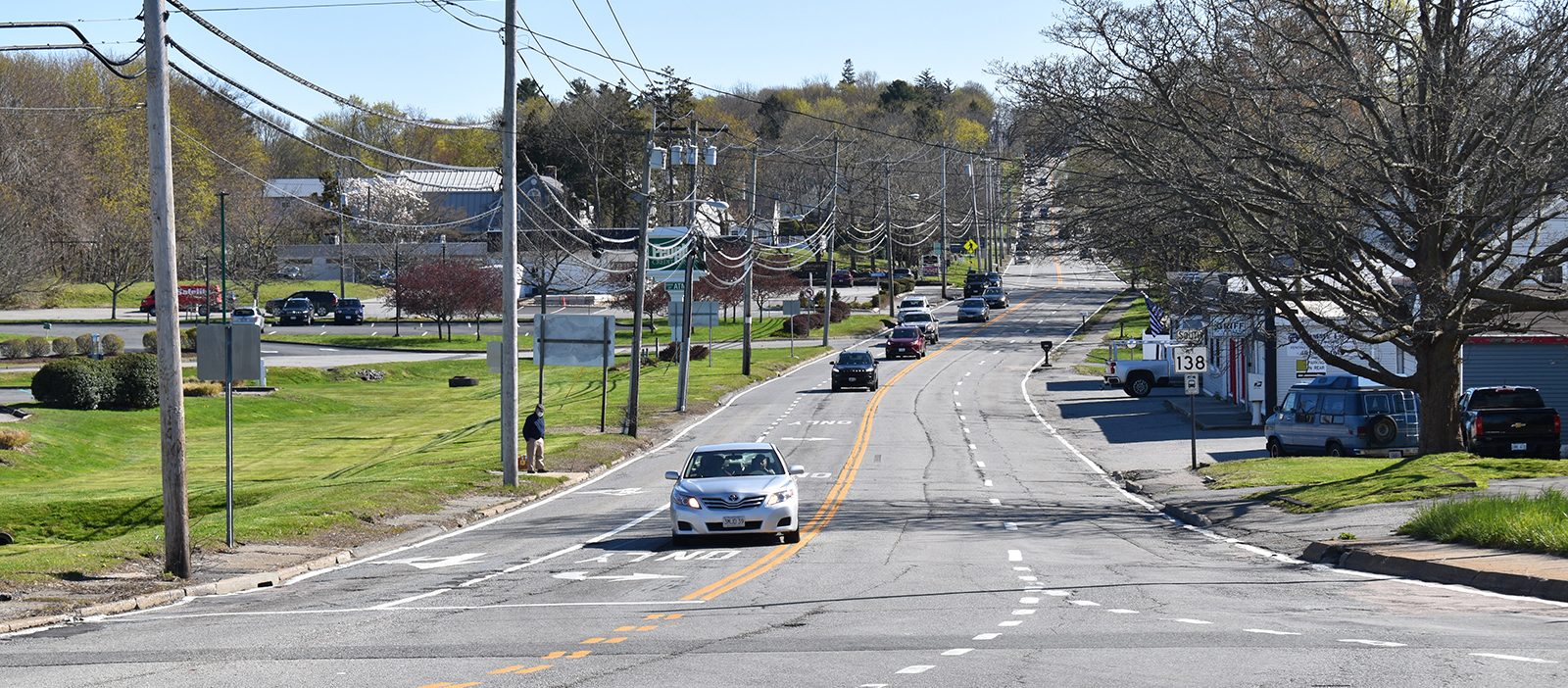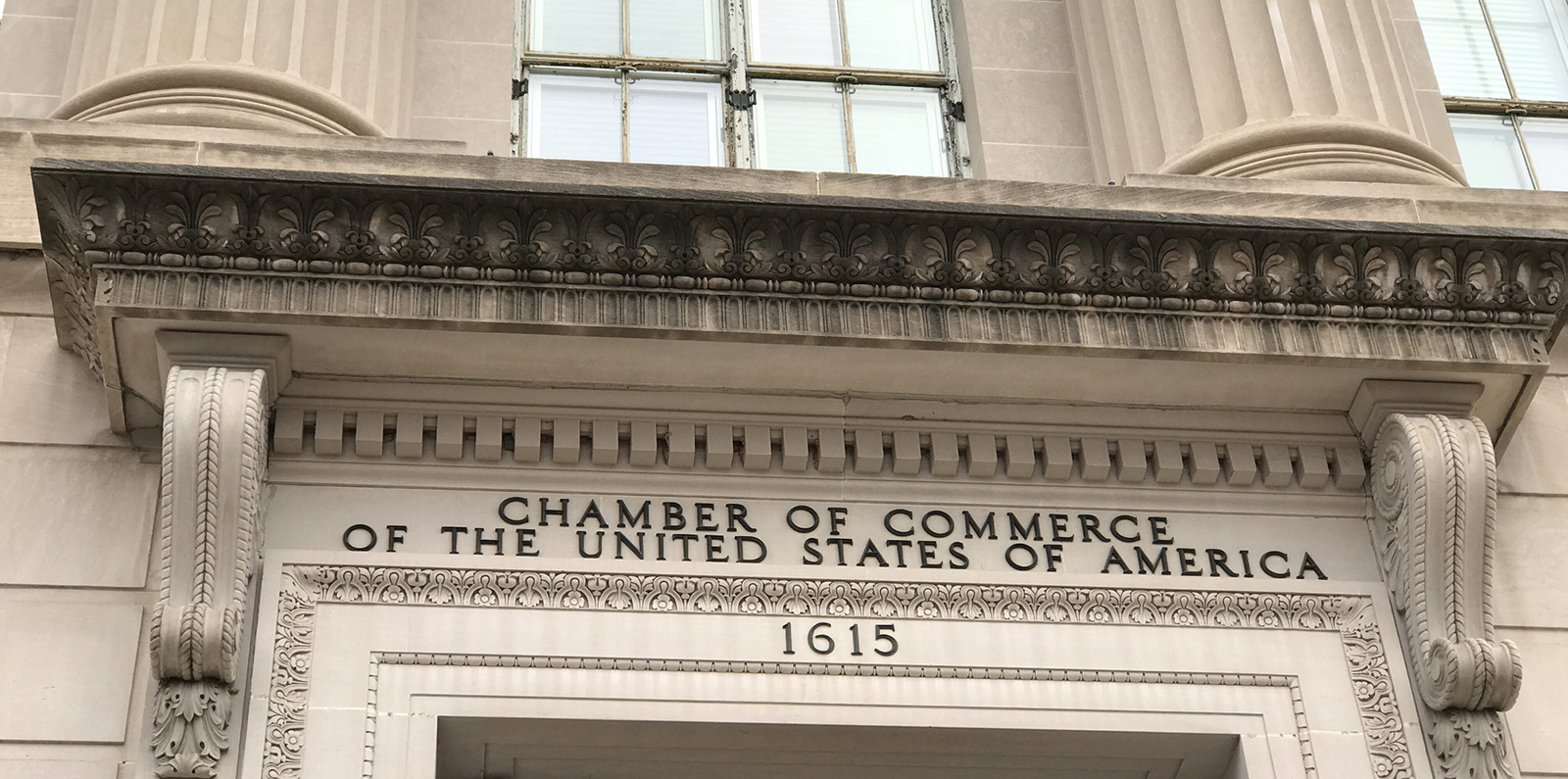Aquidneck Island Needs to Go On a Diet
April 25, 2024
Bicycling on Aquidneck Island is not for the faint of heart. Call me the Cowardly Lion.
Legendary Belgium cyclist Eddy Merckx would find East and West Main roads challenging, and during his professional heyday he was known as “The Cannibal.”
To get most anywhere on Narragansett Bay’s largest island requires navigating one of those two racetracks — a task that even in a motorized four-wheeled vehicle can be taxing.
It’s time for the island’s three municipalities — Portsmouth, Middletown, and Newport — to go on a diet. A road diet converts a four-lane road, as East and West Main are, into three lanes: two lanes for travel in either direction, with a turning lane installed in the middle that either travel lane can use to get across.
Sidewalks and protected bike lanes would be a welcome and wise decision, which is why it likely won’t happen. Current leadership at the Rhode Island Department of Transportation isn’t known for its wisdom or affinity for the public.
As a Portsmouth resident, I would also like to request some bus shelters on both roads, but since the Rhode Island Public Transit Authority is in an $8 million hole, the governor doesn’t ride the bus, Statehouse leadership holds solutions for further study, and the only support public transit receives from those in charge is their nonstop effort to move Kennedy Plaza to Providence’s hinterlands, I (and many others) would settle for some traffic-calming measures on East and West Main roads.
But, alas, an effort to address the roadway mess where Turnpike Avenue intersects with Route 138 (East Main Road) in Portsmouth was met by the unimaginative owners of a supermarket. Clements’ Marketplace has filed suit against the town and RIDOT over a planned roundabout in front of the store.
RIDOT is expected to resurface East Main Road starting in Middletown later this year, but, unsurprisingly, RIDOT isn’t recommending Aquidneck Island go on a diet.
In a memorandum sent to Middletown’s town administrator, RIDOT outlined the pros and cons of changing the road’s configuration. The agency noted it “has concerns about implementing a road diet,” because of added delay and congestion, especially during summer peak season; it would be “very difficult to pull out of unsignalized” side streets; and motorists may shift to an already congested West Main Road.
The only way to relieve congestion is to make both roads safer for bicyclists and pedestrians and, of course, to better fund and support public transit, but that’s an issue for another Take or two.
Even though the cons outnumber the pros in RIDOT’s 5-page memo, the first pro is a doozie: “With the reduced number of lanes from four to three and the reduced speed, bicyclists and pedestrians would be more comfortable and feel safer to cross and travel along East Main Road.”
It’s way past time to make pedestrian and bicycle safety and convenience a priority, not something we try to accommodate without inconveniencing motorists, of which I am much of the time, mostly because Rhode Island’s non-car options are some combination of disjointed, unsupported, unsafe, and unreliable.
Road diets are a priority safety design recommended by the Federal Highway Administration to reduce crashes and improve safety for all roadway users.
The cost of safer travel for pedestrians and bicyclists? A few extra minutes driving from one Aquidneck Island community to another, and likely being forced to drive the speed limit.
A 2020 road safety assessment for East Main Road in Portsmouth showed there are about 200 crashes on the state road annually. Bari Freeman, founder and executive director of Bike Newport, has noted studies show a road reconfiguration would help reduce traffic accidents, considerably.
With a road diet center turning lane, crashes on East Main Road can be expected to decrease by almost 50%, according to a recent Ride Island briefing document. The island-wide initiative led by Bike Newport and Grow Smart RI aims to create a connected bicycle network to encourage bike transit on Aquidneck Island.
With 80% of all car trips on Aquidneck Island amounting to 4 miles or less and about 50% 2 miles or less, transit advocates have long viewed the 5-mile-wide and 15-mile-long island as a prime candidate for improved bicycle transit.
Sixty percent of those living on Aquidneck Island want to bike but opt not to take a peddled trip because they are concerned about safety, according to a survey conducted by Ride Island.
Last summer Ride Island released a comprehensive bike plan for Aquidneck Island. The 78-page document was dedicated to the bicyclists who have lost their lives on Aquidneck Island roadways: Elias Velasquez Chavez, Art Weekley, Elliot Kaminitz, and Michael Strickland.
The report noted that the “potential for active transportation on Aquidneck Island is not being realized today because there are very few places to safely ride a bike and there are few walkable neighborhoods on the island.”
Bike Newport is also, smartly, doing its own analysis of East Main Road traffic modeling, with data provided by RIDOT, to see whether the travel delays estimated by the car-first state agency accounted for the constant stop-and-go in the left travel lanes when vehicles make turns.
The Middletown Town Council held a public hearing April 15 on the proposed East Main Road diet. The council voted, 5-2, against proceeding with lane changes, but left the door open for future reconsideration, according to a Newport This Week story.
Council President Paul Rodrigues said creating a bike lane on a road with vehicular traffic is not a sound idea. “That’s not safety,” he said. Apparently, the saying “share the road” means nothing to Rodrigues. And by his definition, there’s no real place for bicycling on Aquidneck Island.
Council member Barbara VonVillas blamed others for not wanting her driving time slowed down. “Trucks are not going to slow down, and they are not going to get out of the way,” she said.
If you drive a truck, VonVillas believes you are a menace and susceptible to committing vehicular homicide. I hope she doesn’t drive a truck.
But one Middletown resident succinctly summed up the problem, saying a reduction from four to three lanes would only create more frustration for motorists. Motorist bitterness trumps safety and sharing.
A week earlier the Portsmouth Town Council voted, 4-2, to adopt as a “philosophy” a proposed road diet for East Main Road, according to the Portsmouth Times.
Freeman told the council that “We all know the configuration of East Main Road is dangerous and stressful. The road has four travel lanes, no turn lanes, mostly no shoulder and side streets and driveways on both sides of the road. We all know what it feels like to stop in the travel lane and wait to make a left turn. It’s scary to sit there and feel rushed. And if we’re approaching someone sitting there, we’re thinking about how to change lanes and avoid them to begin with. This scenario is one of the top causes of the 200-plus crashes on East Main Road each year.”
Tom Welch, a member of the Middletown Town Council, told his Portsmouth counterparts that he endorses the idea of lane reductions. He noted East Main Road is 42 feet wide, with four 10-foot lanes and that the RIDOT Highway Design Manuel specifies a minimum of 11 feet for travel lanes. He said the state did nothing after Middletown and Portsmouth officials raised that discrepancy.
That’s because RIDOT and purported state leaders have long dismissed non-car transit relied on by the elderly, people with disabilities, and low-wealth families.
Frank Carini can be reached at [email protected]. His opinions don’t reflect those of ecoRI News.




I have grown up from 1953 to travel all 3 towns.. what needs to be done is enlarge all of the roads on east main and west main road… our roadways are having increased drivers every year…. making the roads smaller will make it a hardship on islanders and those who live in Tiverton/Little Compton… please widen the roads, …Not… make it smaller!! Thankyou
Thank you Frank for raising this issue. I have been driving those roads for 50 years and they are still scary. Actually scarier as car traffic has increased significantly over those years.
It is interesting to note that since the bridge debacle, 10 foot lwide lanes are now OK on 195 even though as you stated, “RIDOT Highway Design Manual specifies a minimum of 11 feet for travel lanes.” Apparently no one read this manual when coming up with the 3 lane solution for bridge traffic. The good news is that the trucks get 11 feet.
Two relatively simple fixes: 1) repaving the decrepit 1/2 mile long path on the right side of 138 from Turnpike Avenue to Portsmouth Town Hall (shown in your picture), and 2) creating a new 100 yard long path along the east side of 114 from Mill Lane to the Dunkin Donuts (which would require a small ‘taking’) would make it possible to safely bike north to south of the entire island along existing bike-appropriate roads. Why haven’t Infrastructure or Inflation Act funds been allocated to this ? Portsmouth needs to do some bike path advocating – as being preferrable to a road diet !
Fire Alviti